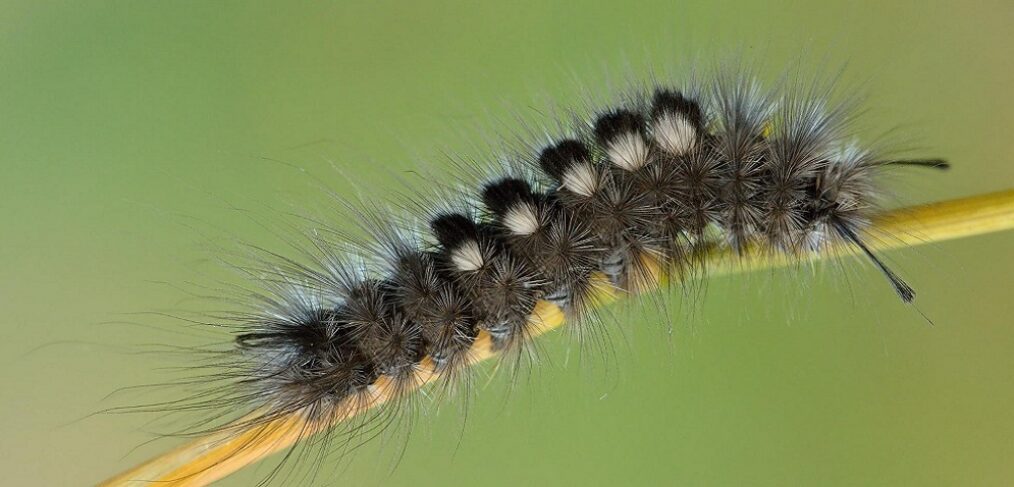
Species of the week # 103 – Gynaephora selenitica
Pollinators include not only bees and bumblebees, but also butterflies. With its fuzzy fur, the Gynaephora selenitica is not only always well coiffed, but also an excellent pollen taxi. The caterpillars and also the adult moths pick up a particularly large amount of pollen with their fur and transport it from flower to flower. British researchers have even found that the majority of pollination is carried out by nocturnal insects.
| Distribution stauts in Rhineland-Palatinate | Extinct |
|
Rmaining occurance
|
Bavaria, Austria
|
|
Last sighting in Rhineland-Palatinate
|
1964 Mechtersheim
|
|
Habitat
|
Lean semi-arid grasslands, sparse pine forests, high moor margins |
| Threat | Light pollution, islandisation, habitat loss |
The Gynaephora selenitica is a small, very rare moth of the owl family. The caterpillar is easily recognisable by its five black and white tufts of hair on its back. Just like the caterpillar, the adult moth has sickle-shaped spots on its wings, which give it its name in german.
The caterpillar prefers to eat butterworts such as crown vetch and sainfoin, but also ear willow and blackthorn. The caterpillars are often seen in autumn, the species also hibernates as a caterpillar. The moths can only be seen from May to June.
Like most moths, the moths are strongly attracted to light. Gynaephora selenitica are unfortunately very susceptible to diseases and pests, which often affect an entire local population. Therefore, large areas with several local populations are important to ensure the continuation of the species. Due to islanding, scrub encroachment or cultivation of the meagre sites, the Gynaephora selenitica loses its habitats. As a result, the species is considered critically endangered throughout Germany, with a further downward trend.
Politically necessary:
– Biotope networking
– Designation of sufficiently large protected areas
– Permanent assurance of good biotope management
– Minimisation of light pollution
Foto : Ivar Leidus • CC BY-SA 4.0
